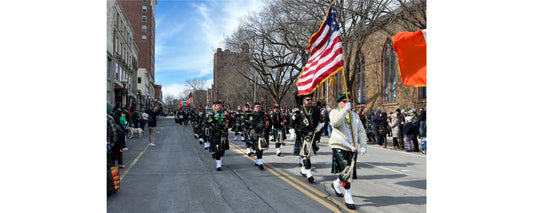On the morning of May 10, 2017, Fort Nathan Hale Park was abuzz with preparation ahead of its season-opening celebration a few days later. At the northern end, a small plinth stood empty in the middle of a five-pointed star. It raised the question: Where was Nathan Hale? In pictures, a statue of the fort’s namesake stood there.
Scott Lacey, the fort keeper, beckoned me to follow him to a small shed. He went in alone and came out with Nathan Hale, shaped out of not-so-weatherproof fiberglass. Memorialized this way, the young man looks at first like he’s standing at attention. But a little attention of your own reveals a darker truth: His feet are tied together, and his wrists are also bound, drawn to the right of his back, and his blank eyes stare far ahead, looking into something unfathomable.
The name of Nathan Hale should ring a bell for most anyone who’s gone through the American school system. Hale was only 21 when he was executed as a Revolutionary spy on September 22, 1776, and he might have slid quietly into the footnotes of history if not for his purported gallows eloquence, as related by generations of eulogizers: “I only regret that I have but one life to lose for my country.”
Though it may be more folklore than history, the language wouldn’t have been out of character for Hale. He attended Yale from age 14 to 18, living in still-standing Connecticut Hall. After graduating in 1773, he became a schoolteacher, later heading to a school in New London, where he taught until 1775.
That year, Hale was swept up by revolutionary fervor, joining the local militia and heading to Boston. Thanks to a diary he kept of his early war experiences, we get a glimpse of the marching, drilling, waiting. It was pretty dull—which might be why, by September 1776, Hale transferred into Knowlton’s Rangers, the first espionage organization in America. Tasked with discovering enemy troop movements and other intelligence, it was a much more dangerous gig, requiring levels of guile Hale didn’t at all have.
But George Washington feared an invasion of Manhattan, and Hale was tapped to find out more. On September 12, he boarded a ship in Norwalk and disembarked on Long Island—only to witness New York falling to the British three days later.
Undeterred, Hale made for Brooklyn, hoping to discover the next move of the enemy. An American frontiersman turned British ranger, Robert Rogers, spotted Hale and thought him suspicious. Rogers stalked Hale for several days, eventually sidling up to him in the guise of a fellow revolutionary.
As a firsthand account unearthed in 2000 reveals, it was easy to convince the wet-behind-the-ears spy that Rogers had friends who were also revolutionaries, and that Hale should tell them of his mission too. That’s how Hale was tricked into spilling the beans in front of several Loyalists, which got him arrested and summarily hanged without a trial. Adding insult, his corpse was left to swing for nearly a week.
But it was a while yet before the man would become the myth. As the 19th century marched on, the deaths of aging revolutionary figures inspired increasing interest in Hale, who, as a symbol, was almost unbearably romantic: a young, well-connected Yale graduate, said to be handsome and kind, cruelly given a rapid execution and a long hang, who’d taken on a dangerous assignment with gusto and never wavered even in the face of death.
The tributes started coming. In the early 19th century, Black Rock Fort was rebuilt and rechristened Fort Nathan Hale, just in time for another battle with the British. In 1827, the first major detailed account of his death was published. In Coventry, CT, his hometown, in 1846, an obelisk was erected in his memory. In 1884, a statue was placed in Hartford’s capitol building. In 1893, a romance novel-worthy statue of Hale was dedicated in New York’s City Hall Park. And in 1914, the most famous depiction of Hale—a bronze figure designed by Bela Lyon Pratt, of which Fort Hale Park’s fiberglass statue is a replica—was installed on Yale’s Old Campus, outside Connecticut Hall, where it stands today.
Since his death, Hale has been an important symbol for the university, and the fact that Hale had his diploma on him when he was arrested suggests Yale was just as important to him. But neither the school’s statue nor any other depiction shows the real Nathan Hale, since, by the time people wanted to depict him, no known image had survived. Sporting idyllic farm boy looks and roguish but dignified clothes, the alumni who gifted it thought Pratt’s wide-eyed rendition fit the bill.
Some people echo former CIA director William Casey in wondering why a failed spy would be held so high as an example to others. Not just a fancy of the distant past, Hale was, for instance, named Connecticut’s state hero in 1985. The timing of that decision notwithstanding, a survey of tributes made to Hale throughout history suggests they tend to increase in number and passion when the United States is on the eve of armed conflict.
It points to a more logical explanation than the one just presumed—that Hale’s example isn’t one of prowess but of feeling. The legend states its view of his value quite clearly: he was a patriot willing to die for his country, and for those who would make war, justified or not, getting soldiers and citizens to embrace that as a virtue is half the battle.
Written by Anne Ewbank. Photographed by Dan Mims. This story originally published on May 24, 2017.







